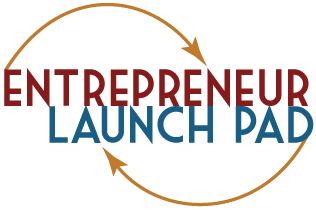By Allisan Looman.
Allisan Looman, professional web and graphic designer(www.allisanlooman.com), recently gave a presentation at ELP Orem regarding website strategies. She noted that social media has made your website the primary location for your prospects to learn about you, your company and your service or product(s). Because of the interconnectedness of all your web sites, there are six items you must pay particular attention to:
- Branding: You must decide what your branding will look like and keep it consistent in all your sites. This includes your business heading, logo, colors and site organization. Sites must be easy for your customers to navigate and quickly find what they want. When they link to your website from your YouTube or Facebook site, will they see the same title, letting them know they reached the page they wanted? If they don’t, you’ll lose them very quickly. You can check to see if they are leaving too fast from your website by checking your bounce rate on your Google Analytics.
- Product Presentation: Your product needs to look so good, the person seeking it is on your site to purchase it. So what brought him to the site. She saw a great video on your Facebook wall showing the benefits to the customer from buying the product, or he read a great description of the benefits he would get from purchasing the product along with a picture on your blog a link to your purchase page. And that purchase page reinforces the benefits as it describes or pictures the product.
- Contact Information: Every website needs have your email and contact information prominently displayed in the top left or the top right of the home page. Your contact information should also be available at your social media sites as well.
- Sales Cycle: Today’s sales cycle starts with a sales letter, video, tweet, blog, or post on LinkedIn or Facebook. (naming the main social media). In these locations, the prospect’s attracted to a headline that references a want that resonates with him. He reads the brief introduction and recognizes he wants to know more. In the blog and sales letter he reads on, but in the others he clicks a link to your website to get more information. His research tells him that this product or service will give him the benefits he wants. He reviews testimony from other satisfied users and reflects on his desire to be like them. He continues to the purchase page and realizes he can afford the product or service, and purchase it. Good, quality, professional copy will propel the prospect through the sales cycle.
- Promotions and Events: Your social media sites are the best locations to inform your prospects of your sales promotions and special events. Promoting these events to your own customer/client list is best done through tweets, Facebook posts, and autoresponder emails and if it’s a B2B product or service, to your LinkedIn connections.
- Navigation: One of the largest failings of a business website is poor navigation. Customers are impatient. If your links don’t take them right to the promised location, they’re out of there. If they come to the home page and cannot easily find the navigation bar with the tabs either just below the header or in the top of the left sidebar, they’ll leave your site. And your tab names need to clearly tell what the page is. Make sure your drop down boxes showing the nestled pages actually work. Nothing is more frustrating to a customer than being unable to get to the page they want.
SEO
- Your domain name: If you have the luxury of getting the right name for your site. Check it and see if it’s keyword rich. If there are related domain names you find are keyword rich, grab them and park them to be used later.
- Page Titles: Any page title should have at least one key word. More is better.
- H1 tags (also H2, H3, H4): These are the header text–large text announcing what’s in the next section of the writing.
- Bulk Keywords: These are the keywords you include in the body of your writing. It also includes text that identifies an image, whether pictures or illustration or tables.
Social Media
- Blogs: Use for: Boosting SEO (huge); sharing news, advice, how-to’s, giveaways (for something in return), contests, and keeping in touch with clients and customers. Post these at least twice weekly. They are better than newsletters, because they are interactive with your readers.
- Discussion Forums: Use for posting questions and answering questions; boosting SEO (huge); establishing yourself as an expert; and encouraging repeat visitors.
- Facebook: Use for popularity contests, quotes, advice, funny/amazing videos, contests, giveaways, coupons, and promotions. Always remind your “friends” why they need you.
- Email Campaigns: Use for loyal customers and targeted prospective clients. Make them short and sweet. Use them to point prospects to the primary website or to a give away bait piece. Give them something they want or they’ll ignore you.
- Twitter: Use to disseminate “insider” news, quotes, advice; share blog posts and articles, etc.
- YouTube: Use to target anyone you want. Know your audience before you write the video script. Create videos that are Amazing (think Blend Tec), Funny (think eTrade baby), or How-to.
- LinkedIn: Use this site to connect with business owners, professionals and job seekers. You can send promotions to other business owners and professionals that you are connected to.
Other Social Media sites include Flickr, for posting photos; Wordbooker, which takes your blog and puts it on Facebook; Groupon.com, social living for coupons; and MailChimp.com, biggest free site for email campaigns using an autoresponder. And don’t forget, you can post your YouTube videos on Facebook, LinkedIn, your blog, and any of your website pages.
